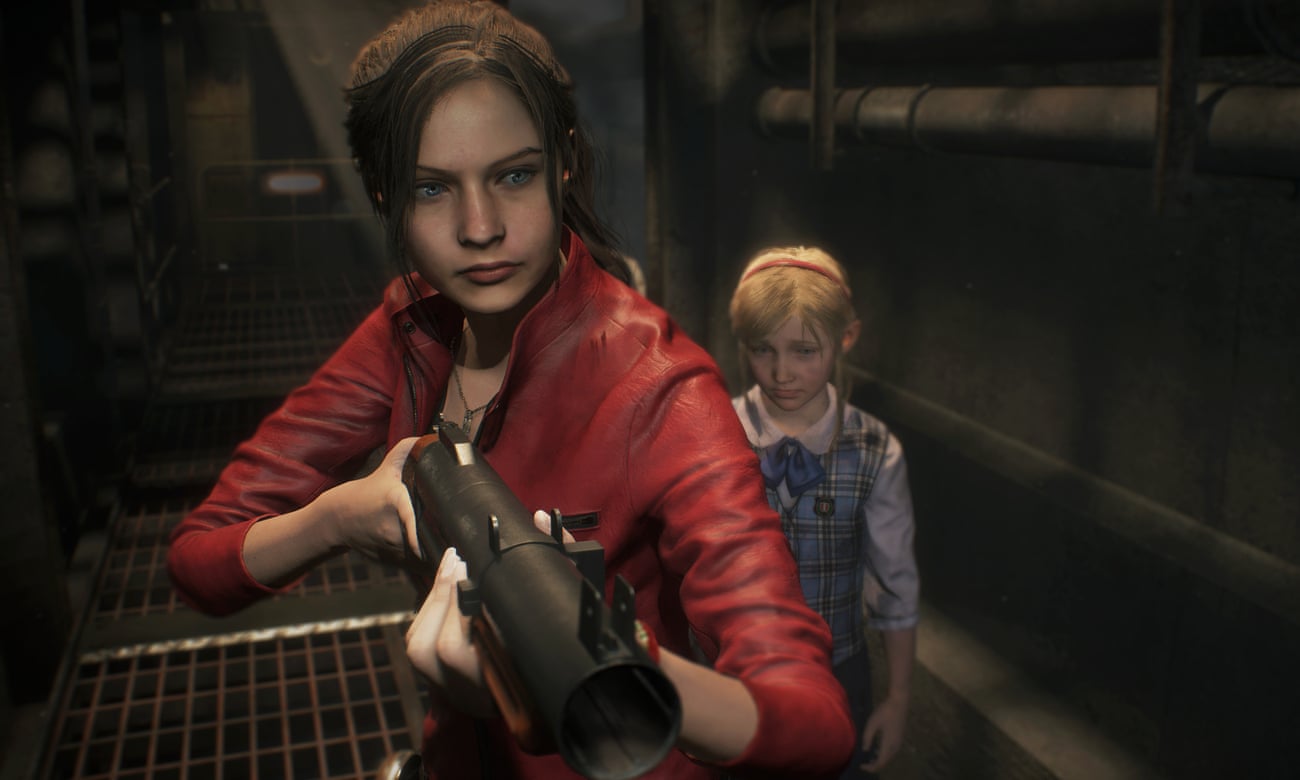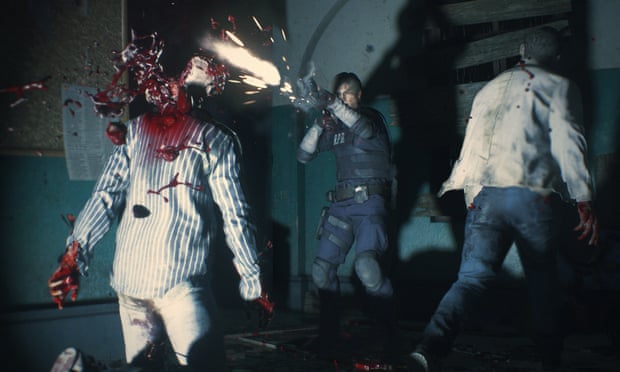Resident Evil 2 review – genre-defining horror, loaded with dread
Capcom’s survival horror classic returns with improved visuals, new controls and a whole host of monstrous surprises
Let’s get this out of the way: Resident Evil 2 is the best game in Capcom’s long-running survival horror series and possibly the greatest example of the genre ever produced. Released in 1998, two years after the agenda-setting Resident Evil, it introduced the iconic characters Leon Kennedy, Claire Redfield and Ada Wong. It had wonderfully horrible monsters (the tongue-lashing Lickers, the hideously mutated William Birkin, the indomitable Mr X), and it boasted a brilliant set-piece location, the Racoon City police department, housed within a scary old art gallery.
Now, 20 years later, Capcom has taken the game by the scruff of its neck, fully updated the visuals and controls, and reshuffled the narrative structure to deliver a contemporary horror experience that plays like our blood-tinted memories of the original. There’s been a zombifying outbreak in Raccoon City and two characters, rookie cop Leon and student Claire, find themselves trapped in the seemingly abandoned police station, trying to work out what has happened while fighting off the greedy and persistent undead. As we encounter reams of mutated scientists and endless documents about synthetic viruses, it becomes clear that local employer Umbrella Corp has been a very naughty pharmaceutical megacorp.

Every location in the game is, in fact, a giant and enthralling escape room, in which fiendish puzzles involving weird gems and gadgets and complex sequences of numbers and rotations reveal keys to the next locked area. The ultimate brainteaser, however, is inventory management. Ammo is strictly rationed, so every encounter is fraught with deadly peril (although a new assisted mode makes things more palatable for newcomers, offering unlimited saves and easier aiming).
This time round the experiences of lead characters Leon and Claire have been divided into two different adventures, rather than having players swapping between two similar versions of the same narrative, which was perhaps the only trying element of the 1998 version. To facilitate this, there are new areas to discover, while iconic locations – such as the police station – have been restructured and expanded, a fascinating and at times terrifying change for veterans who still recall the original and think they know where the monsters are. Play through the game as one character, and you open up a “second run” version of the other character’s story, so the two feel much more integrated.
Cleverly, the concessions to modernity – including a dynamic camera and behind-the-shoulder perspective – don’t ruin the gripping tension. Resident Evil 2 is a game loaded with dread. Every darkened corridor, dimly lit by flickering strip lights, every gothic chamber, dressed with stuffed animals and ancient libraries, every metallic laboratory, crammed with bizarre scientific equipment, is drenched in uncanny atmosphere. The diabolical mad-scientist narrative retains its B-movie schlock appeal, but is much improved with new voice acting (much to the chagrin of some fans) and lead characters who don’t look like blocky shop-window mannequins.

Directed by Hideki Kamiya (who would go on to oversee the spectacularly stylish Devil May Cry, Viewtiful Joe and Bayonetta), the original Resi 2 was more lush and cinematic than its predecessor, with well-directed cutscenes that really shine in this modernised version. Drawing on influences from the Alien and Die Hard movies as well as countless gothic thriller tropes, Resident Evil 2 still feels really alive as a horror text, and its underlying themes of scientific hubris, ingenuity and comradeship will resonate just as much with younger audiences more familiar with Netflix than exploitation flicks.
Ultimately, the Resident Evil 2 remake is a reminder of how beautifully crafted survival horror games were in their heyday. From a terrifying orphanage to the festering sewers beneath the city, the feel of the action is always perfectly matched with the aesthetics of the setting. The rhythm, gradually building from many minutes of quiet exploration and puzzle-solving to gigantic, pulverising boss battles, is exact and beautiful, like some monstrous Wagner opera.
For veterans who remember the original (and I reviewed it at the time), it is an unmissable nostalgic treat. For those who don’t know their T-Viruses from their Code Veronicas, the experience is easily vivid and entertaining enough to stand on its own merits. This is horror game design as true craft.





Hello to every one, since I am truly eager of reading this
website’s post to be updated on a regular basis.
It contains pleasant data.